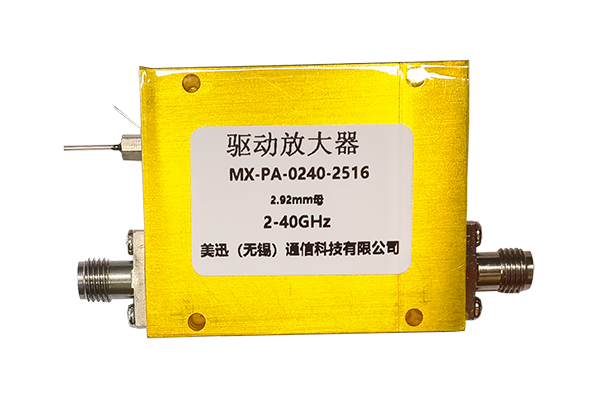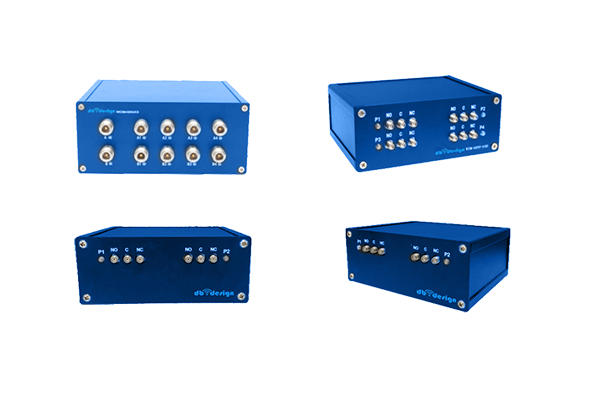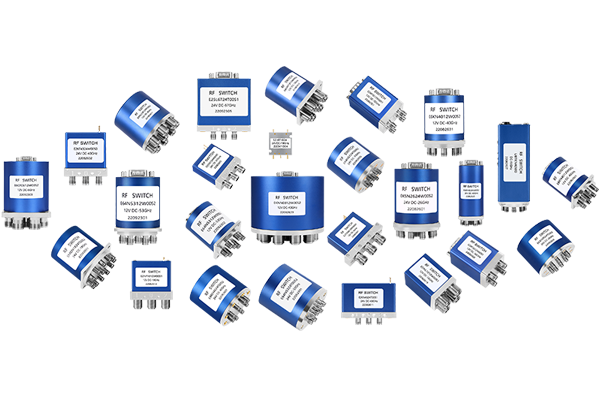
Pin diodes are established as major constituents in high-frequency electronics due to their natural device characteristics Their ability to operate with fast state changes and low capacitance while maintaining minimal insertion loss fits them to switching modulation and attenuation tasks. The fundamental operating principle of PIN diode switching rests on adjusting current flow with a control bias. A change in bias voltage transforms the depletion-region width of the p–n junction, affecting conductance. By varying the bias level PIN diodes can be reliably switched to operate at high frequencies with low distortion
Where timing precision and control matters PIN diodes get implemented into high-level circuit systems They are suited to RF filtering arrangements for selective band pass and band stop operations. Their robust power handling means they can be used in amplifier power distribution and signal generation roles. Miniaturization and improved efficiency of PIN diodes have extended their usefulness across wireless systems and radar platforms
Coaxial Switch Architecture and Performance Review
Developing coaxial switches is complicated and depends on careful analysis of key parameters Coaxial switch effectiveness depends on the switch kind frequency of operation and insertion loss metrics. Superior coaxial switch design seeks minimal insertion loss alongside strong isolation between ports
Examining performance entails assessing return loss insertion loss and isolation figures. These metrics are commonly measured using simulations theoretical models and experimental setups. Accurate analysis is crucial to ensure reliable coaxial switch operation across systems
- Simulation packages analytic approaches and lab experiments are commonly applied to analyze coaxial switch designs
- Switch performance may be significantly affected by thermal conditions impedance mismatches and production tolerances
- Emerging developments and novel techniques in switch design concentrate on boosting performance while minimizing footprint and energy use
Optimizing LNA Designs for Performance
Achieving high LNA performance efficiency and gain is critical for exceptional signal fidelity in many use cases Successful optimization depends on proper transistor selection correct biasing and appropriate circuit topology. Effective LNA designs minimize internal noise and maximize clean signal gain with little distortion. Simulation modeling and analysis tools are indispensable for assessing how design choices affect noise performance. Securing a low Noise Figure indicates superior capability to amplify while adding little noise
- Choosing transistors with inherently low noise characteristics is critically important
- Establishing proper bias conditions with optimal settings minimizes noise within transistors
- Topology decisions critically determine how noise propagates in the circuit
Techniques of matching networks noise cancellation and feedback control contribute to improved LNA operation
Pin Diode Switch Based Signal Routing

Pin diode switches provide a versatile and efficient approach for routing RF signals across applications These semiconductors can be rapidly switched on or off allowing dynamic path control. A major advantage of PIN diodes is low insertion loss and high isolation which reduces signal degradation. PIN diodes are used in antenna switch matrices duplexers and phased array RF systems
The applied control voltage modulates resistance to toggle the diode between blocking and passing states. As deactivated the diode provides high resistance, impeding RF signal transmission. A positive bias drives the diode into lower resistance so RF energy can pass through
- Additionally PIN diode switches present fast switching low energy use and compact dimensions
Various PIN diode network configurations and architectural designs can achieve advanced signal routing functions. Combining multiple switch elements makes possible dynamic switching matrices enabling flexible routing
Measuring the Performance of Coaxial Microwave Switches

Testing and assessment of coaxial microwave switches are crucial to ensure efficient operation within systems. Various performance drivers like insertion reflection transmission loss isolation switching speed and bandwidth influence switch behavior. Comprehensive assessment includes testing these parameters under multiple operating environmental and test scenarios
- Furthermore the testing should cover reliability robustness durability and resistance to harsh environmental influences
- Finally results from comprehensive testing offer crucial valuable essential data to inform selection design and optimization of switches for particular applications
LNA Noise Minimization Techniques A Detailed Review
Low noise amplifiers are fundamental in wireless RF systems as they amplify weak signals and reduce noise contributions. The review provides a comprehensive examination analysis and overview of noise reduction techniques for LNAs. We examine explore and discuss primary noise origins such as thermal shot and flicker noise. We examine noise matching feedback loop designs and bias optimization techniques for noise mitigation. It highlights recent progress including advanced semiconductor materials and novel circuit topologies that cut noise figure. Offering a thorough understanding of noise mitigation principles and methods the review helps designers and engineers build high performance RF systems
High Speed Switching Roles of PIN Diodes

Their remarkable unique and exceptional electrical traits make them apt for high speed switching systems Their small capacitance and low resistance facilitate high speed switching suitable for accurate timing control. Moreover PIN diodes exhibit linear proportional responses to applied voltage enabling precise amplitude modulation and switching control. This flexible adaptable versatile behavior makes PIN diodes suitable applicable and appropriate for varied high speed roles They find use in optical communications microwave circuitries and signal processing devices and equipment
Coaxial Switch Integration with IC Switching Technology
IC based coaxial switch technology advances signal routing processing and handling in electronic systems circuits and devices. IC coaxial switch solutions orchestrate control management and directed signal flow through coaxial media while keeping high frequency performance and reduced latency. Miniaturized IC implementations provide compact efficient reliable and robust designs enabling dense interfacing integration and connectivity
- With careful meticulous and rigorous deployment of these approaches developers can accomplish LNAs with outstanding noise performance enabling trustworthy sensitive electronics By meticulously carefully and rigorously adopting these practices designers can deliver LNAs with excellent noise performance supporting reliable sensitive systems By rigorously meticulously and carefully implementing these techniques practitioners can achieve LNAs with remarkable noise performance for sensitive low-noise amplifier reliable electronics By meticulously carefully and rigorously applying these methods developers can produce LNAs with superior noise performance enabling sensitive reliable electronics
- IC coaxial switch uses include telecommunications data communications and wireless network systems
- Integration of coaxial switch ICs serves aerospace defense and industrial automation industries
- IC coaxial switching finds roles in consumer electronics audio visual equipment and test and measurement tools
mmWave LNA Design Considerations and Tradeoffs

Designing for mmWave requires accounting for high attenuation and pronounced noise effects. At these high bands parasitic capacitances and inductances dominate and require careful layout and component selection. Reducing input mismatch and boosting power gain are critical essential and important for LNA functionality at mmWave. Selecting the right active devices including HEMTs GaAs MESFETs and InP HBTs helps secure low noise figures at mmWave. Additionally furthermore moreover careful design implementation and optimization of matching networks is vital for efficient power transfer and impedance matching. Attention to package parasitics is crucial as they have potential to harm mmWave LNA performance. Implementing low-loss transmission lines along with proper ground plane design is essential necessary and important for reducing reflection and ensuring bandwidth
Characterization and Modeling of PIN Diodes for RF Switching
PIN diodes serve as important components elements and parts within a variety of RF switching applications. Accurate precise and detailed characterization of these devices is essential for designing developing and optimizing reliable high performance circuits. The work involves analyzing evaluating and examining electrical characteristics like voltage current resistance impedance and conductance. Characterization also covers frequency response bandwidth tuning capabilities and switching speed latency or response time
Furthermore moreover additionally accurate model and simulation development for PIN diodes is vital essential and crucial for behavior prediction in RF systems. Different numerous and various modeling strategies are available including lumped element distributed element and SPICE models. The selection of an apt model simulation or representation relies on particular application requirements and the expected required desired accuracy
Advanced Cutting Edge Sophisticated Techniques for Low Noise Quiet Minimal Noise Amplifier Design
Engineering LNAs demands careful topology and component decisions to achieve superior noise performance. Novel and emerging semiconductor progress supports innovative groundbreaking sophisticated approaches to design that reduce noise significantly.
Among several numerous numerous these techniques are employing utilizing implementing wideband matching networks incorporating low noise transistors with high intrinsic gain and optimizing biasing scheme strategy approach. Furthermore advanced packaging and thermal control strategies play an essential role in lowering external noise contributions. By rigorously meticulously and carefully implementing these techniques practitioners can achieve LNAs with remarkable noise performance for sensitive reliable electronics
